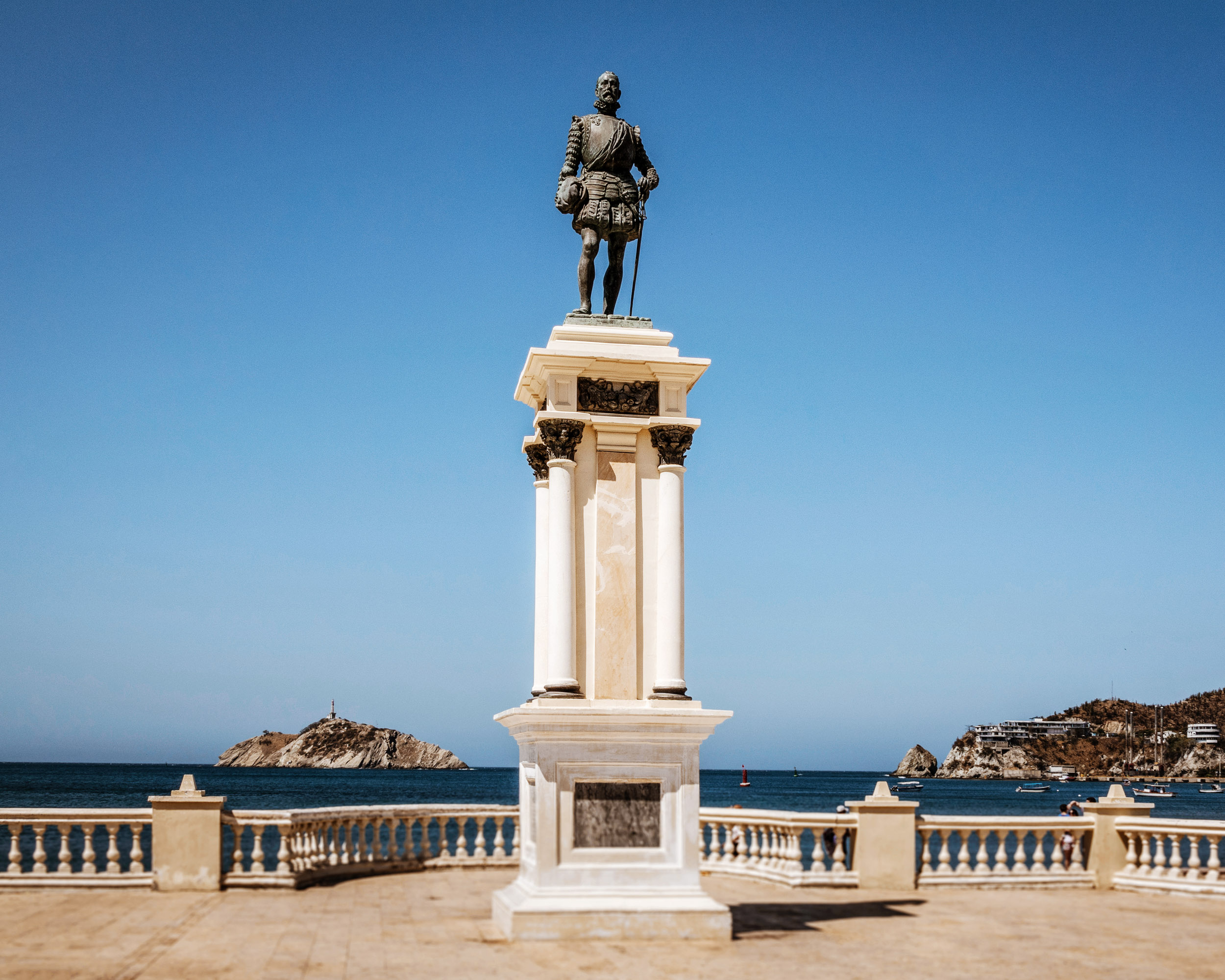The earliest known inhabitants of the territory that is now Colombia date back to at least 12,000 BC. Archaeologists have uncovered artefacts from this period at Serranía de la Lindosa, where an 8-mile stretch of rock shelters and gullies are decorated with intricate prehistoric paintings thought to depict extinct megafauna (Iriarte et al 2022).
 Rock paintings at Serranía de la Lindosa. The age of the paintings is not determined, but artefacts in the area date back to at least 12,000 BC. Photo adapted from Iriarte et al (2022), published under a Creative Commons licence.
Rock paintings at Serranía de la Lindosa. The age of the paintings is not determined, but artefacts in the area date back to at least 12,000 BC. Photo adapted from Iriarte et al (2022), published under a Creative Commons licence.
The first fixed settlements appeared by 2000 BC, and the population then, as now, was concentrated in the Andean highlands (Bushnell and Hudson 2010).
The first Spanish expedition arrived in 1499, and the Spaniards established their first permanent colonial settlement, Santa Marta, on the Caribbean coast in 1525. Initially called the New Kingdom of Granada, it became part of the Viceroyalty of Peru in 1542.
Santa Marta, site of the first permanent colonial settlement
During the sixteenth century, European settlers began to bring enslaved African workers into the country. Indigenous people at the time were officially protected from slavery but fared little better than the Africans, being forced to provide labour or tribute in gold to local officials.
In 1717, the region corresponding roughly to modern-day Colombia, Venezuela, Ecuador, and Panama became the Viceroyalty of New Granada, with Bogotá as its capital.
The movement towards independence followed on Napoleon’s invasion of Spain in the early nineteenth century. The rebellion began with an uprising in Bogotá on 20 July 1810, a date commemorated as Colombia’s independence day. Simón Bolívar led the invasion that culminated, in 1819, in the formation of the independent republic called Gran Colombia.
 The territory of Gran Colombia in 1824
The territory of Gran Colombia in 1824
Following internal conflicts and war with Peru,


